The deadening sound of skulls smashing against one another echoed across the Juarez bullring. The year was 1907, and an American bison and a Mexican bull had just collided head on. Promoters had brought the two animals together with dual purposes. They wanted to see which of the beasts was tougher, and they wanted to make money. Having sold 10,000 tickets to the event, the promoters had accomplished the latter goal. The only thing that remained, then, was to see whether the buffalo or the bull be the first to fall.
The mastermind behind the fight was rancher James 'Scotty ' Philip. Although he would later become synonymous with the history of the American West, Philip was of Scottish birth. In 1874, at the age of 16, he and a group of his fellow Scotsmen immigrated to the United States, where they founded the ranching town, Victoria, Kansas. Things didn 't go well for the new arrivals. Instead of raising cattle as they 'd intended, many of the young immigrants took to drinking and playing sports all day. Money soon ran out, and most of the Scotsmen packed their bags and returned to their homeland.
Not Philip. He went in search of gold. In 1874, George Armstrong Custer and the 7th U.S. Cavalry discovered gold on Sioux territory in the Black Hills of South Dakota. Although federally recognized Indian land, white miners flooded into the Black Hills to make their fortunes, and towns such as the infamous Deadwood soon sprang up to accommodate the new arrivals. The Sioux fought back against the violation of their territory, but the U.S. Army defeated them and forced them on to nearby reservations.
Philip would make his home on one of these Sioux reservations. Among the first to arrive in the Black Hills, Philip tried mining, but circumstance kept him from profiting in the endeavor. So Scotty 'so nicknamed for his Scottish ancestry 'returned to herding cattle and soon became one of the wealthiest ranchers in the Dakotas. His success owed, in part, to Sally Larribee, an American Indian woman whom Philip had wed during a foray ranching in Nebraska. Larribee 's Indian ancestry allowed Philip to pasture his herd on Sioux land, something prohibited to whites without Indian relatives. Philip grew rich off this territorial monopoly, remaining on the Sioux reservation until the U.S. government opened the land to white settlers in 1898. When this happened, Philip purchased a considerable amount of pastureland near the town of Fort Pierre and relocated his herd.
By 1898, Philip 's herd included not just cattle, but also buffalo. American bison 'more commonly referred to as buffalo 'are 700-2,800 pound mammals native to North America. Herbivores, buffalo are rarely aggressive, using their horns only when necessary to fend off bears and mating rivals. Buffalo historically ranged across the North American Plains from Alaska to northern Mexico, where they formed the basis of Plains Indian society. Their meat provided sustenance, and Indians used buffalo hides as clothing, teepees, and trade goods. Because buffalo were so important to native culture, Indians fostered buffalo growth by periodically burning the plains to create pastureland. With this help, the American bison population grew to some 60 million by 1500 A.D.
By the time Philip acquired land near Fort Pierre in 1898, the buffalo population had dropped to less than 1,000. The animal had become a favorite target of American hunters, who’d moved on to the plains in the mid-19th century. Part of the westward expansion of white settlers from the burgeoning United States, these hunters followed the railroad, shooting upwards of 100,000 buffalo a day for meat to feed railroad workers and for hides to ship to consumers on the American East Coast. Using high-powered rifles that could drop an animal at 1,000 yards, hunters also killed for no other reason than it hurt the Plains Indians who depended on buffalo for survival. By 1880, hunting had brought bison to the verge of extinction.
Scotty Philip had developed an affinity for buffalo while living on the Sioux reservation in the Dakotas. Each year, he 'd witness herds crossing the plains during their seasonal migration only to see them return the following year fewer in number. Admiring the buffalo 's majesty and tranquil nature, Philip decided to do something before hunters could eradicate the animal. He purchased bison from a neighbor who 'd rescued calves during a buffalo hunt, and began raising the animals on his property near Fort Pierre. By 1907, Philip 's bison herd had grown to some 1,000 head, making Scotty 's ranch home to more buffalo than the rest of the world combined.
Scotty efforts, an end to the West 's Indian Wars, and Buffalo Bill 's Wild West Show 'which featured American Bison 'made the United States sympathetic to the plight of the buffalo. By 1905, the American public clamored for the government to create reserves for the endangered animals. With the support of naturalist President Theodore Roosevelt, the people of United States unofficially adopted the buffalo as one of the nation 's mascots. Americans grew proud and protective of the animal that they 'd almost brought to extinction.
This pride would lead Scotty to match one of his animals against a Mexican bull. According to one version of the story, when a group of Mexican diplomats visited Scotty 's ranch in Fort Pierre and saw their first bison, they began to mock the animal for its slow and lumbering nature. Philip took offense to their jests and boasted that his buffalo were tougher than any fighting bulls in Mexico. He 'd even prove it by setting up a fight between the two animals. Whether this story is true or not 'or Scotty came up with the plan while drinking in a bar on Christmas, as another version of the story goes 'Philip wanted to show that American bison deserved respect.
Philip had the buffalo and the desire to put on the fight, but he didn 't have a Mexican fighting bull or even a place for the combat to take place. U.S. law and the A.S.P.C.A. wouldn 't allow such a thing on American soil. Thankfully 'or unthankfully from the animals ' perspective 'Philip 's friend Bob Yokum had cousins in El Paso that could put the rancher in contact with the manager of the Plaza de Toros bullring in Juarez, Mexico. Bullfighting was legal in Juarez and its location just across the border from El Paso meant Scotty could take the animals there by train.
Felix Robert managed the Plaza de Toros bullring in Juarez. Short, tan, and almost always wearing a bright wide smile, Robert was a former matador from France. Being a Frenchmen in a trade usually dominated by Spaniards distinguished Robert from other bullfighters, as did his eclectic bullfighting techniques. Like traditional Spanish matadors, Robert would entice a bull with a cape, sashay out of the way when charged, plant barbs into the passing animal 's shoulders, and finish off the bull with a sword to the heart. What made Robert unique was his incorporation of French bull-leaping techniques: he 'd often carry a pole into the bullring with him, which he 'd use to vault over a charging bull. Robert 's prowess earned praise from no less than the Queen of Spain herself, a fact that the matador was always eager to share.
Although a praiseworthy bullfighter, as a manager Robert put on awful bullfights. According to newspapers, the Plaza de Toros was less a bullring and more a butcher shop. Robert employed poorly trained, slovenly matadors who lumbered about the ring displaying none of the artistry seen in bullfights in Spain. His bulls were scrawny, mangy, and poorly bred. During bullfights, matadors clumsily stabbed at the pathetic animals, causing unnecessary pain and blood loss. Things weren 't much better for the bullfighters. Robert 's matadors often found themselves punctured by a bull 's horn, and there had been multiple human deaths in the Plaza de Toros.
Thing was, Robert realized that he didn 't need to hire the best matadors or worry about safety and tradition to make money. In the early 1900s, Juarez was more of a Wild West town than a cultural center like Madrid. Most of the Americans and poor Mexicans that made up audiences in Juarez cared nothing for the tradition and pageantry of European bullfighting. They just wanted to see blood. It didn 't matter if it was a matador 's blood or a bull 's. Robert capitalized on this carnal desire by putting on exciting shows that usually ended in something dying. One of the Plaza de Toros most profitable events, in fact, had been an interspecies cage-fight-to-the-death between a lion and a bull.
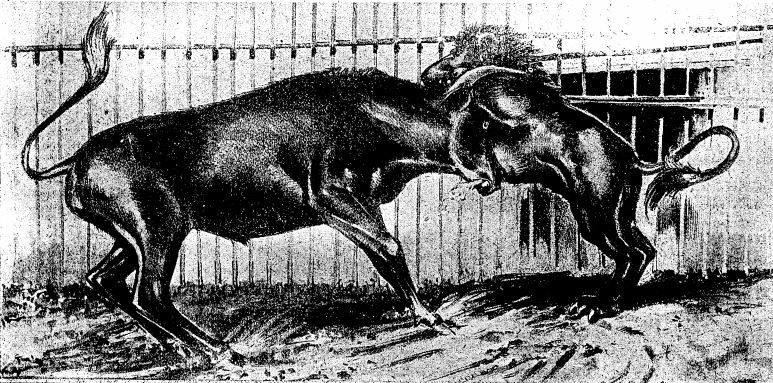
1902 cage fight between lion and bull. A lion and a bull also fought on the border in 1895. El Paso Herald
So when Bob Yokum 's cousins approached Robert with Philip 's idea for a different sort of animal fight, the matador jumped at the opportunity. He scheduled the event for Sunday January 27, 1907, telegrammed Philip, and set out to find a suitable bull. The usual scrawny bovines that he used in his bullring wouldn 't do for such a large event. He needed a true Mexican fighting bull, the kind that weigh in excess of 1,500 pounds and possess an unnatural aggression due to thousands of years of selective breeding. It seems Robert found such an animal. Newspapers differ on the bull 's origins 'some saying that it hailed from Chihuahua, others Durango 'but most agree that Robert found an excellent 1,000 pound+ specimen that looked nothing like the cheap animals usually on display in his shows.
Now that he had a date and location, Philip scoured his herd for a buffalo to ship to Juarez. After careful consideration, he whittled his selection down to two animals. One was eight-year-old alpha male Pierre 'named after Ft. Pierre 'that weighed nearly a ton and was among the largest in the herd. Unsure if Pierre 's size would be a detriment in a fight with a fast moving bull, Philip also considered bringing a smaller, but faster four-year-old male whom he called Pierre Jr. Unable to pick between the two animals, Philip took both in case one was injured. He then herded the two animals on to a specially outfitted train car for the journey south. Bob Yokum 'the friend with cousins in El Paso 'and ranch hand Eb Jones would join Philip on the trip to Juarez.
Just as the train prepared to depart in early January 1907, a massive snowstorm hit Fort Pierre, threatening to freeze Philip 's cattle herds. Although he longed to see his buffalo compete, Philip decided that he needed to stay in Fort Pierre to care for his livestock. So in his stead, he sent his twenty-seven-year-old nephew, George Philip. Although levelheaded and intelligent, George lacked his uncle 's way with people. He also was less experienced working with bison, as he 'd chosen to attend law school over ranching with Scotty.
After a series of delays on the long train ride, George, Eb Jones, Bob Yokum, and the buffalo arrived in Juarez on the morning of the fight. Knowing that the animals would be in poor shape from being cooped up in the train for the past week, George hoped to delay the showdown with the bull. The circulars scattered throughout the town, the large crowd gathered at the Plaza de Toros, and Felix Robert 's actions quickly informed him of the impossibility of this plan. With crowds already piling into the Plaza de Toros, Robert had already had his men offload the buffalo and bring them to the bullring before the men from the Dakotas could even exit the train. By the time that George Philip and his companions made their way to the bullring, the buffalo had already been prepped to fight.
When George met Robert, then, the only thing left to do was to decide which of the two buffalo would fight. He chose eight-year-old Pierre. Although he didn 't write down his thought process, it 's possible that George saw Robert 's fighting bull and realized that even speedy Pierre Jr. would be unable to outrun its horns. Pierre 's size advantage, on the other hand, could make a difference in the fight.
Both animals would have fans in the audience. Because Robert had advertised the fight in both the United States and Mexico, the crowd was evenly divided between Americans and Mexicans. This would be the first visit to a bullring for most of the Americans, many of whom had come only to support the U.S.-born Pierre. For most of these newcomers, it would also be their last time in a bullring. When the day opened with traditional bullfights, many Americans grew sick when they saw Robert 's inept bullfighters awkwardly slaughter three bulls. Their disgust grew when a bull chased a matador over a fence, and then itself jumped over the fence and landed on the downed matador, injuring both animal and man. Before long the Americans started mocking bullfighting as a sport and grumbling that it was time to get on with the main event.
Whether it was the Americans vocal revulsion with their sport or sympathy for the Mexico-born bull, the Mexicans in the Plaza de Toros would root against the buffalo. It 's possible that some in the crowd saw the contest in nationalistic terms. In 1907, Mexico was on the precipice of revolution, owing, in part, to Mexican President Porfirio Diaz 's pro-American policies: he allowed U.S. companies to exploit Mexican workers and steal land from Mexican peasants. To many Mexicans, the United States was a bully. Invariably, some in the crowd wanted nothing more than to see a Mexican bull take down one of America 's symbols.
The chances of this happening looked good when fight time arrived. When the bullring 's gates opened, Pierre lumbered through them as if he hadn 't a care in the world. He showed no reaction to the crowd, sauntered to the center of the ring, and just stood there, looking more like a statue than a dangerous animal. Although his size amazed those who 'd never seen a buffalo before, Pierre 's lethargy had many in the crowd laughing. George Philip was not among them. He realized too late that Pierre had an injured knee that he 'd likely incurred while kicking the side of his train car. The buffalo would have to fight hurt.
On the contrary, the bull that Robert had chosen was at full health and looked menacing when he stormed out of his pen into the arena. Without a moment of hesitation, the bovine set his sights on Pierre, dropped his horns, snorted, and charged, aiming for the buffalo 's exposed side. Pierre just stood there, perpendicular to the bull, looking blissfully unaware that a dangerous animal was preparing to imbed its horns in his side. To those in attendance, it looked like the buffalo was about to go down.
He wasn 't. When the charging bull came within a few feet of Pierre, the buffalo pivoted towards the incomer, swung out his rear legs, lowered his head, and drove it into the bull 's forehead. The collision of the two animals ' thick skulls produced an awful, sickening thud that reverberated throughout the arena, silencing the crowd. Newspapers reported that the sound echoed for blocks.
The bull had just learned a lesson in bison ethology. Whereas bulls use forward momentum and their hind legs to drive into opponents, buffalo rely on gravity and their front legs for power. They kick out their small hindquarters, and allow gravity and their foreleg muscles to ram their dense skull and horns. They don 't need to run to build momentum and can turn on a dime. Because of this, the bull had been running not towards a defenseless opponent, but one that was fully prepared to fight.
The head on impact dazed both animals. It seems that the bull was the first to recover from the blow because he circled Pierre and went to gore him a second time. Again, the buffalo turned at the last second and met his opponent head on. The bull 's third charge met this same fate.
The repeated blows finally began to affect both animals. Owing to concussion, his injured knee, or a combination of the two, Pierre stumbled, lost his footing, and collapsed. Fortunately for the buffalo, the bull didn 't attempt to gore his downed opponent, likely because he, too, was stunned. Refusing to let the match end so soon, the crowd grew angry and began to boo, forcing Robert to order an attendant into the ring to goad the buffalo into attacking the bull.
The attendant crept into the arena clutching a long metal pole, which he used to poke Pierre 's side. In response, the buffalo angrily rose to his feet, but instead of rushing his bovine opponent, he went after the guy who 'd just poked him with a stick. The sight of the charging one-ton animal sent the man running. He was able to make it to the side of the arena, but just as he was climbing over the top of the fence, one of Pierre 's horns pierced his side. Thankfully for the attendant, he was able to drop to safety before the buffalo could do any serious damage.
The interlude with the attendant allowed the fighting bull to regain his composure, and as soon as Pierre turned his attention away from the fence, he found himself face to face with the bull. Once again, the animals collided, but this time they locked horns and began twisting their heads in a struggle for domination. Horns dragged across flesh, opening wounds. Minutes passed before the two animals found separation.
Once free, the bloody and battered bull lined up for another charge. Again, Pierre was ready. He reared up, and looking uninjured and displaying none of his previous lethargy, met his opponent with his most forceful head butt yet. The bull collapsed. Realizing that he 'd been bested, the bovine quickly returned to his feet and fled.
The sight of the retreating bull changed Pierre. It made him more aggressive. No longer content to remain on the defensive, the large bison chased down his opponent and thrust his horns into his flesh. He didn 't stop at one blow, but instead opened a series of gashes. Accounts differ on the severity of the wounds, but one newspaper indicated that they were so substantial that blood covered the arena. Women fainted. Men turned their heads.
Eventually the bull escaped Pierre 's assault, fled to the other end of the arena, and began 'bellowing like a spoiled child. ' He was unwilling and unable to fight any longer. Pierre snorted and stomped his feet defiantly but left the bull alone. The Americans in the audience cheered.
Although the bull had no fight left in him and the buffalo was the clear winner, Robert announced that the match was a draw because both animals were still alive; he operated under traditional bullfighting rules where victory meant the loser died in the ring. Americans wanting Pierre declared the winner grew angry over the decision. Mexicans in the crowd were similarly vexed. Used to seeing bullfights end in death, they wanted Robert to continue goading the animals to fight again.
The bullring manager came up with a way to keep both nationalities happy: he 'd put another bull in the arena with Pierre. None of his remaining bulls was as big and tough as the one who 'd just fought, but perhaps they 'd be able to capitalize on the bison 's exhaustion and put up an entertaining fight. When Robert offered the Americans more money if he could carry through with his plan, George Philip replied, 'turn in all the damn bulls you wish, just so you give that buffalo room to turn around. '
When Robert 's men loosed the second bull, it quickly became clear that he lacked the pedigree of his predecessor. When he charged, the now veteran Pierre head butted him three times in rapid succession, sending the bull fleeing around the ring. Robert brought in a third bull, but it, too, proved no match for the now aggressive Pierre. By the end of the afternoon, there were three bulls in the bullring doing their best to stay as far away from the buffalo as possible. After briefly chasing the animals, Pierre lay down in the center of the ring and took a nap.
When attendants opened the gates to signal the end of the fight, the bulls fled out of the arena as fast as they could. Pierre lazily made his way out to overwhelming cheers from the crowd. The buffalo had defeated not just one bull, but three; although the last two fights were such a rout, that many newspapers didn 't even bother to report on them.
Although a few traditional bullfighting fans were disappointed that none of the animals died in the combat, most regarded the fight as a success. Americans crossed the border with stories to tell their neighbors. Telegraph cables carried accounts and photos of the event to newspapers across the United States. When Scotty Philip and the people of Fort Pierre opened their January 28 newspaper, news of Pierre 's victory greeted them.
George Philip and the men from Dakota were happy with their first day in Juarez. They 'd already made more money than the trip had cost, and they 'd redeemed the reputation of the American bison. Felix Robert had bet money on his bulls and lost, but he too was happy. He 'd sold out the Plaza de Toros for the first time in its history and ticket sales far outweighed his gambling losses.
Success inspired the French matador. Why settle for a single day of ticket sales when the buffalo could make him more money? So Robert came up with a plan and proposed it to George Philip and his companions: he wanted his most famous (and only competent) matador, El Cuco, to fight one of the bison. Known throughout Juarez as a kind and welcoming man, El Cuco was a stone cold killer in the ring, having dispatched hundreds of bulls during his long career and was one of the few bullfighters in Mexico who could perform the bull-leaping technique. Mexicans would buy tickets to see their favorite matador redeem their nation after the bull 's poor showing. Americans would attend to cheer as their mascot made bullfighting look foolish.
George Philip agreed to Robert 's plan because he believed there 'd be no way that his bison would lose. George even warned Robert that fighting an American bison would be much different than fighting a bull. Whereas cattle have only a thin layer of skin on their back to protect their spinal column and vital organs, buffalo have thick muscles and a dense fur coating. Because of this, matador barbs would be ineffective against a bison and would more than likely only upset the animal. Robert dismissed the American 's concerns and bet 500 dollars that El Cuco would kill his opponent. The ranchers accepted the bet, but only after warning Robert that there was a better chance that the buffalo would kill El Cuco than the matador would kill the buffalo.
After the two parties agreed on money, Robert started advertising the upcoming event as a showdown between man and beast and set the bout for the following Sunday, February 4. Word of the fight spread quickly, sending Mexican elites and rich Americans to Juarez. Once again, the Plaza de Toros sold out, netting Robert $8,000 in ticket sales. Even the Governor of Chihuahua would attend the fight. Although he wouldn 't be traveling to Juarez, Theodore Roosevelt learned of the showdown when the El Paso Humane Society asked him to stop the contest.
The Americans spent the week relaxing, sightseeing, and prepping for the fight. While drinking at Bob Yokum 's cousin 's bar in El Paso, they decided that Pierre Jr. should be the one to face the matador. It 'd be best to allow Pierre to recover from last Sunday 's fight, as his leg injury had grown much worse.
Sunday February 3, 1907 was fight day. Robert hoped to open the event with three traditional bullfights, but things didn 't go as planned. After the first matador and his entourage made their way into the arena, attendants opened the gate holding the first bull. Nothing came out. After some cajoling, a bull emerged, but instead of heading in the direction of the matador, the animal ran to closest fence and tried to climb out. In a cost saving measure, Robert had used the same poor animal that Pierre had battered and bruised the week before. Apparently harboring memories of the encounter with the bison, the bull wanted to exit the arena as soon as possible. After failing to climb the fence, the animal began circling around the matador and refused to engage him. The fight with Pierre had reduced a prime fighting bull to seeing ghosts.
After the first bull refused to fight, Robert had a new matador and bull brought in. This second bull had also fought Pierre the week before, and he, too, refused to engage the bullfighter. Apparently, Robert had not purchased any new bulls, because the third bull to enter the arena had also fought Pierre. He too circled the arena in fear. The crowd booed.
With the audience upset and the Governor of Chihuahua growing angry, Robert prayed that the main event would make up for disaster that had preceded it. It wouldn 't. After the matador El Cuco walked into the bullring with much pomp and circumstance, the gate opened to allow Pierre Jr. to enter. He did so much as Pierre had done the week before: slowly and with little aggression. When El Cuco began waving his cape in the hopes of angering Pierre Jr., the animal just stared. Whereas fighting bulls charge when they see the motion of a matador cape, nature and breeding had not instilled such an instinct in bison.
Unlike Pierre, Pierre Jr. had never been an alpha male, hadn 't face combat in the ring, and, having been raised on Scotty Philip 's ranch, had nothing to fear from humans. He had no reason to go after the matador. To make the animal angry, then, El Cuco ordered a mounted picador to poke the buffalo with a metal pole. The prodding discomforted Pierre Jr. and the animal halfheartedly ran at El Cuco, but he didn 't seem interested in actually causing harm. El Cuco tried to wave his cape and make it look like he was in danger, but the audience wasn 't buying it.
The display disgusted the already agitated Governor of Chihuahua. A few minutes into the performance, he called Robert into his box and told him to call off the fight and refund everyone 's money. In an attempt to placate the crowd and the governor, then, El Cuco offered to, at least, execute the buffalo to satiate those in the crowd who had come for blood. The governor dismissed the offer and went further in his punishment. He fined Robert and his bullfighters $500 apiece and suspended El Cuco from bullfighting. As the crowd filed out of the arena, Robert and his staff refunded their entrance money.
The Americans returned to El Paso for the night disappointed with the day, but happy with the trip overall. Although they 'd missed out on seeing how a willing-to-fight buffalo would fair against a matador, they 'd made plenty of money from the prior Sunday 's fight, and they 'd be bringing home bragging rights to Fort Pierre.
After sleeping overnight, the men returned to Juarez to retrieve their buffalo from the Plaza de Toros. There they found Robert sitting in his office surrounded by his matadors. The Frenchman was angry. He informed the Americans that he 'd lost $8,000 dollars in refunds plus fines. To Robert, in had been the Americans and Pierre Jr. 's unwillingness to fight that were to blame for the financial loss. He went further in his indictments, accusing Bob Yokum of flirting with one of his matador 's wife.
In order to recoup his losses and to restore his bullfighter 's honor, Robert informed the Americans that he would be keeping Pierre. The Americans could take Pierre Jr., but only if they sold the animal to a local butcher as a way of promoting future buffalo fights. Robert warned that if the Americans chose to involve the Juarez police, he 'd sue them. Because the court system was backed up, the Americans would have to await trial in Juarez 's notoriously dangerous jail to ensure that they didn 't skip out on their debt.
As Robert made his audacious demands, George Philip and his companions grew angry. But before the Americans could consider violence or a plan to take the buffalo by force, they noticed that Robert 's matadors had them surrounded and were each wearing a shiny six-shooter on their belts.
Unarmed and unwilling to spend what could be months in the Juarez jail, George Philip acceded to Robert 's demands. They retrieved Pierre Jr. and sold him to a local butcher for $200. Although this part of the bargain displeased the Americans, it wouldn 't keep them up at night. They 'd known that there would be a possibility that U.S. customs officials wouldn 't allow the buffalo back in the United States, so selling the animals to a butcher had always been an option.
Losing Pierre to Robert, on the other hand, hurt. Although it would be nice to think that the Americans had grown fond of the animal and wanted to see Pierre retire to a life of breeding and pasturing instead of further abuse in the bullring, the truth was that George Philip and Eb Jones had been planning future fights for the buffalo. They wanted to take Pierre to Chihuahua City and Mexico City to face the very best fighting bulls Mexico had to offer. They wanted to be the one to profit off the animal 's misfortune, not Robert.
Dejected and bison-less, George, Bob Yokum, and Eb Jones, boarded a train from El Paso to Fort Pierre. When they arrived, Scotty Philip and the people of Fort Pierre greeted them as heroes.
Eb Jones continued to work on Scotty Philip 's ranch, while Bob Yokum ran a general store in Fort Pierre. George Philip continued to help on his uncle 's ranch and became a lawyer in Fort Pierre. Later in life, he 'd write down the story of his time in Mexico.
Less is known about the fate of Felix Robert and Pierre. One day, a woman from El Paso happened to be traveling in Fort Pierre, when she met George Philip, whom she recognized from Pierre 's fight with the bulls. The woman informed George that after Pierre had recovered from his leg injury, Robert once again pitted the animal against bulls. This time, the manager placed Pierre inside a specially constructed wooden enclosure in the center of the bullring to prevent losing animals from taking flight, as the three bulls had done when Pierre hurt them in the original fight. Robert wanted his fans to see death.
According to the woman, four bulls faced off against Pierre that day. None survived. Apparently, the wooden enclosure was well suited to the bison 's method of head butting, while the bulls lacked space to build up momentum for their charges. So one by one, the bulls were led down a small chute into the enclosure to battle Pierre. No longer resembling the timid, docile animal that entered the ring in January 1907, Pierre aggressively attacked his opponents, driving them to the side of the enclosure then goring them with his short horns. According to the woman, Pierre hit one of his opponents so hard that the bull 's lifeless body broke through the wooden enclosure and spilled out of the other side.
The woman said that following the victory, Robert planned to bring Pierre to Madrid to face off against the world 's very best fighting bulls. Nothing has been found to determine if the bison made such a trip. If he did, Pierre would have faced bulls that dwarfed those of Juarez in size and aggression.
If Felix Robert went to Madrid, he was back in Juarez by 1909. That year, he staged a fight between a tiger and a bull, a fight that had to be delayed when the tiger leapt into the stands.
Perhaps owing to this mishap, Robert left Juarez. His departure may have also been due to war. In 1910, Juarez became home to some of the most vicious fighting of the Mexican Revolution, a ten-year-long war that resulted in over one million deaths. Another million residents fled to the safety of the United States.
Felix Robert joined those heading north of the border, and he brought his bullfighting show with him. It seems that bison remained a part of his routine. The last time he 's found in newspapers is in 1911 in Salt Lake City, where he promised another fight between a buffalo and a matador. The results of the contest are unknown, but the bout involved neither El Cuco, nor Pierre. A bull had shattered El Cuco 's back some years before, apparently after the matador try to pole vault the animal, but instead landed on its horn. The buffalo fighting in Salt Lake City was from a local ranch.
As for Pierre, he disappears from history. Although it would be nice to think that Pierre retired to a zoo to live out his last years in peace, it’s likely that the buffalo eventually died at the end of a matador’s sword or a bull’s horn.
From a modern perspective, there are no 'good guys ' to this story. George Philip, Bob Yokum, and Eb Jones, are likeable because we hear their side of the story, but they were all responsible for pitting unwilling animals against one another for personal motives. And as George makes clear in his memoir, they would have continued to do so if they maintained possession of Pierre.
Felix Robert comes off as the story 's villain. He ran the brutal Juarez bullring, stole Pierre, and was to unwilling to accept responsibility for his actions. He deserves scorn. But perhaps Robert was not as bad as he comes off in American newspapers and George Philip 's account of the events in Mexico. George may have exaggerated or lied about Robert 's actions for some unknown reason. Unfortunately for Robert, we don 't have his side of the story.
The one redeemable person in the story is Scotty Philip. Although it was his idea to put on the fight in the first place, Philip 's motivation was not profit but pride in a species he loved and helped to bring back from the verge of extinction. Shortly after the events in Juarez, Philip began providing bison to parks that promised to care and propagate the species. Most of today 's American bison descend from these herds. Whether this redeems Philip for his role in the Juarez bullfights is a matter of debate.
In 1911, Scotty died of a brain hemorrhage and was set to be buried on a bluff overlooking his Fort Pierre ranch. As the funeral procession carrying Scotty 's body reached the gravesite, a herd of buffalo descended from nearby hills and joined them. The buffalo pastured as Scotty was lowered into the ground.
Brad Folsom
UPDATE January 11, 2014: Scotty’s wife’s name is “Sally,” not Sarah as previously written. Also, the couple met in Nebraska, not Kansas. Thanks to Cathie Draine (George Philip’s granddaughter and editor of Cowboy Life) and Sheliah Philip for taking the time to read the post and send in these corrections. You can find Cowboy Life here.
I would also like to thank Justin Koehler, director of the 2013 Scotty Philip’s documentary The Buffalo King, for his complimentary words. It is truly an honor to receive accolades from the makers of what I believe to be the ultimate authority on Scotty Philip. Anyone who enjoyed this article should check out The Buffalo King. It’s excellent. You can find The Buffalo King here.
IF YOU LIKED THIS STORY, please read an account of an 1895 cage fight between an African lion and an American grizzly.
NOTES:
There are multiple accounts of the fight between the buffalo and bull on January 27, 1907, and few agree on specifics. All accounts have the buffalo emerging victorious in the first fight with the bull, and most agree that the contest was brutal. Some have the buffalo defeating the bull after a few head butts, while other claim that both combatants fought until their internal organs spilled out. Because he was the most specific, I deferred to George Philip 's account and supplemented with information from newspapers.
Most newspapers mention only one fight, and George Philip claimed there were four. I settled on three, the number given by the Fort Pierre newspaper. I believe that most newspapers only mentioned the first fight because the others were so one sided, and think George Philip was mistaken about a fourth fight.
SOURCES:
Philip, George. Cowboy Life: The Letters of George Philip. South Dakota Historical Society, 2007.
Romo, David Dorado. Ringside Seat to Revolution: An Underground Cultural History of El Paso and Juarez, 1893-1923. Cinco Punto Press, 2005.
Aberdeen American
Albuquerque Journal
Dallas Morning News
El Paso Times
Kansas City Star
Oregonian
See also:
http://www.philipsouthdakota.com/other_7.html
A documentary about Scotty Philip is currently in post production. Find out more on Facebook at The Buffalo King.






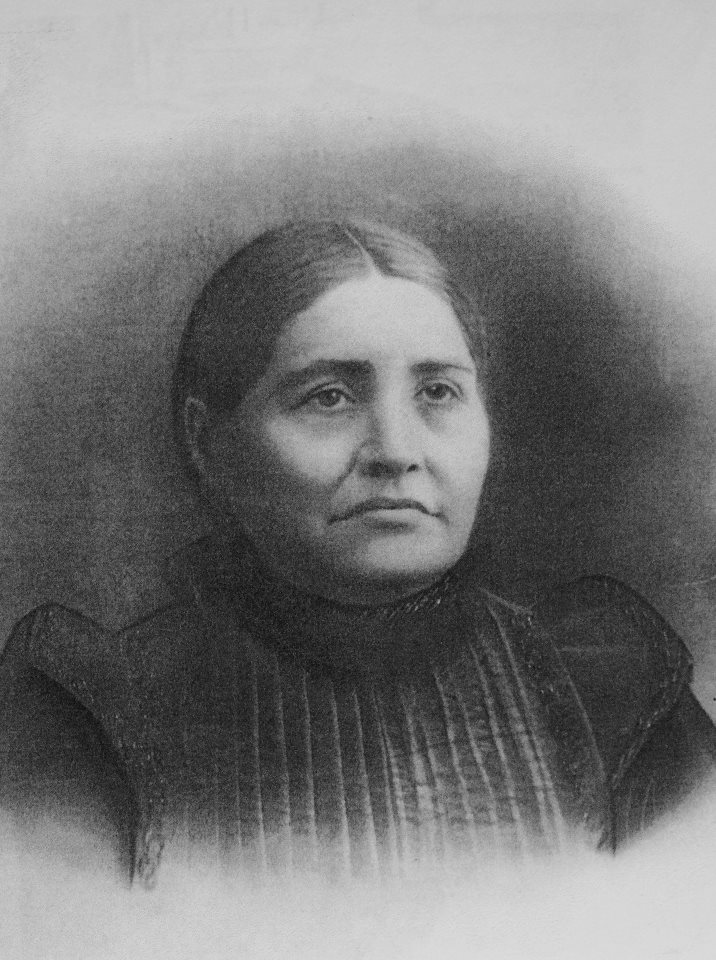
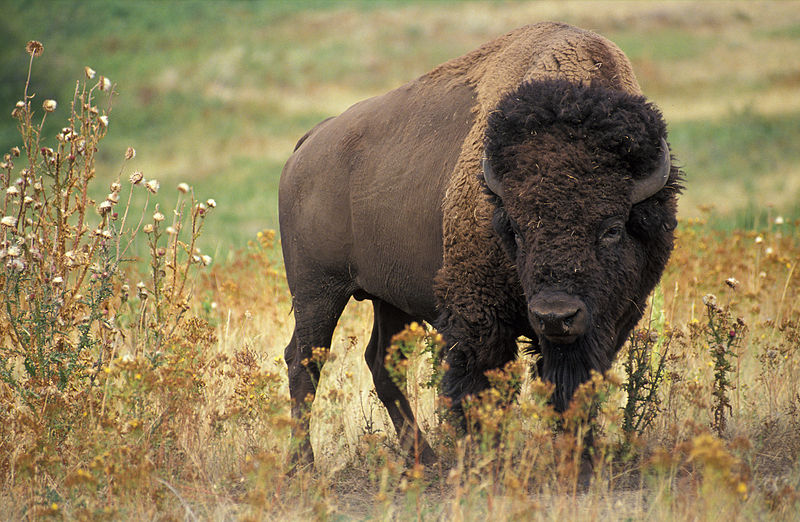
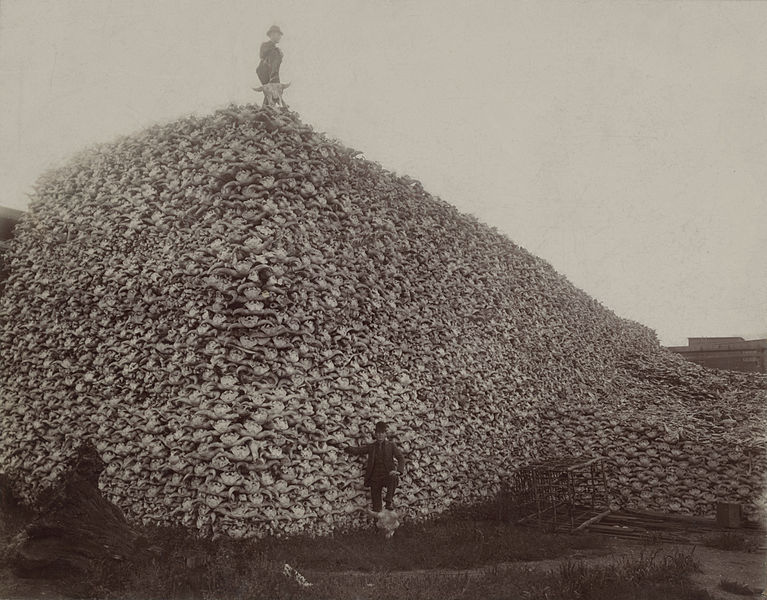
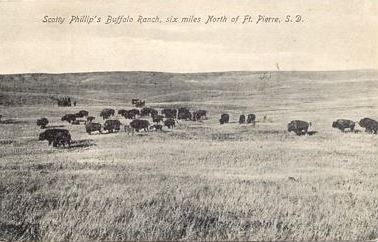

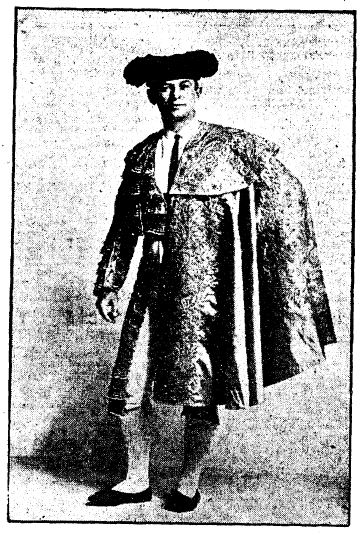
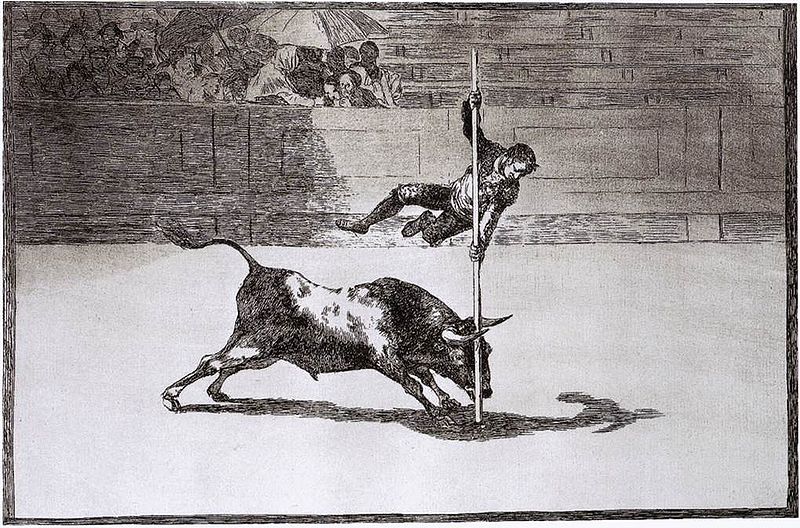
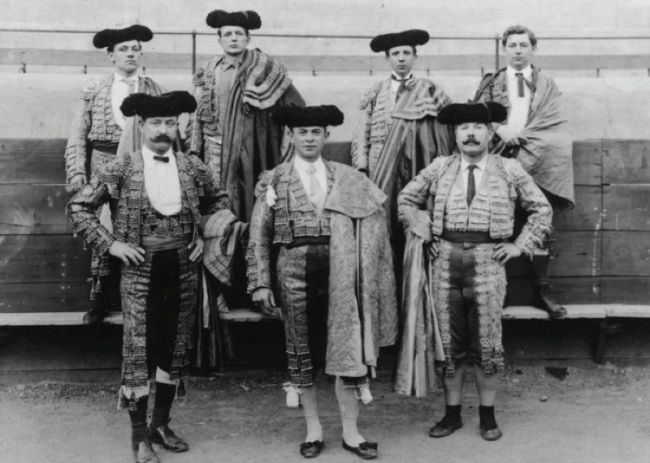
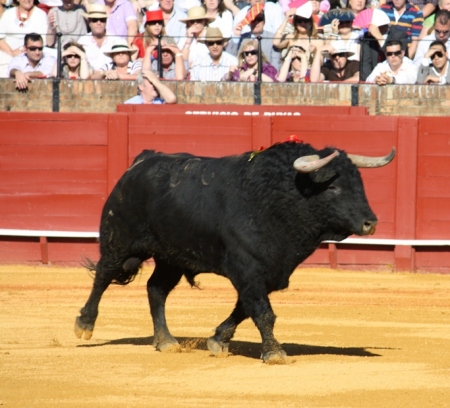
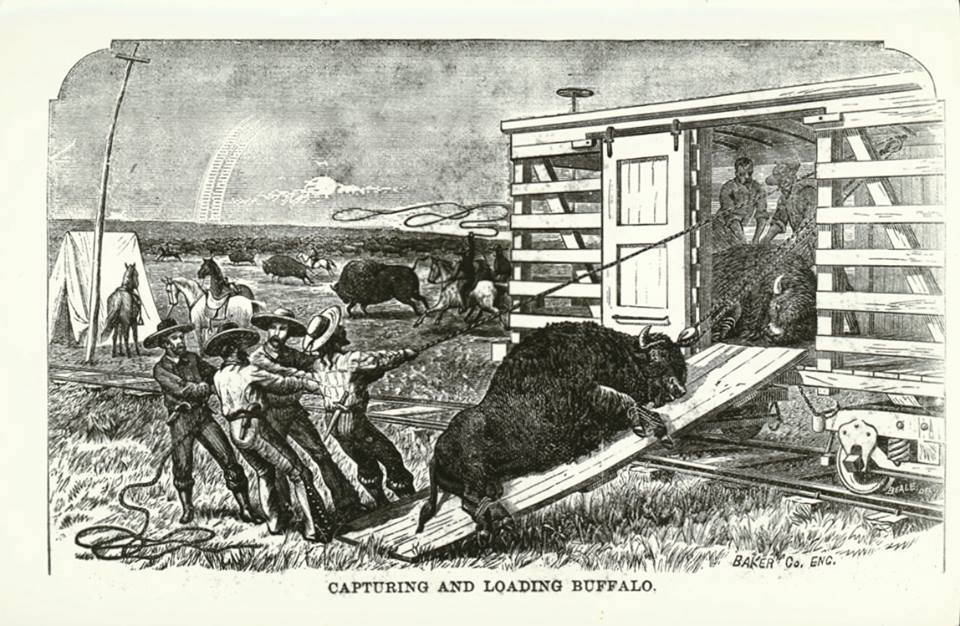
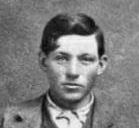
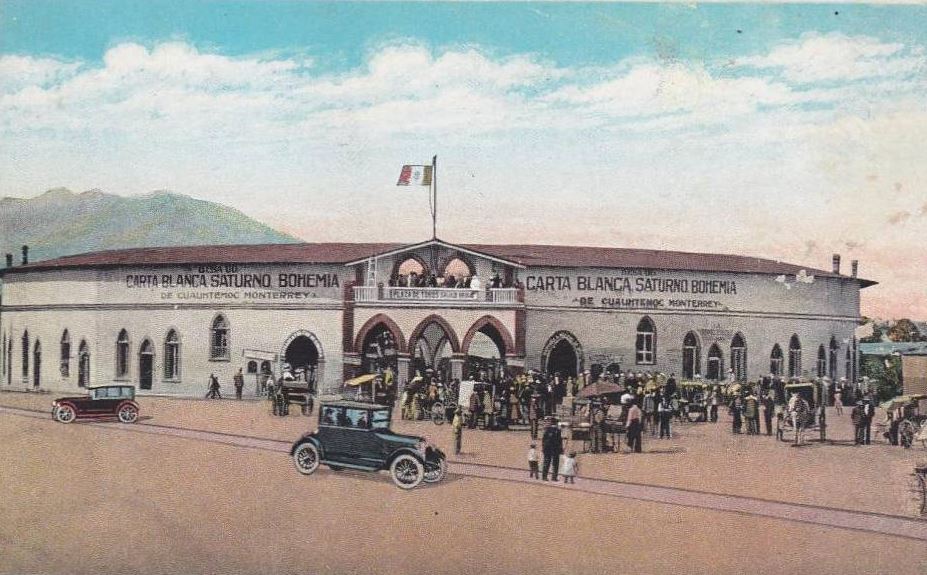
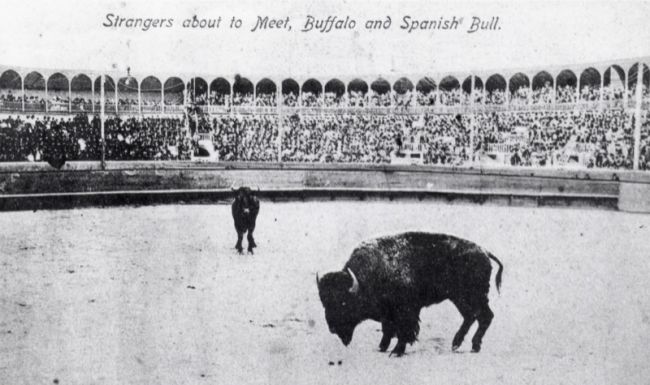
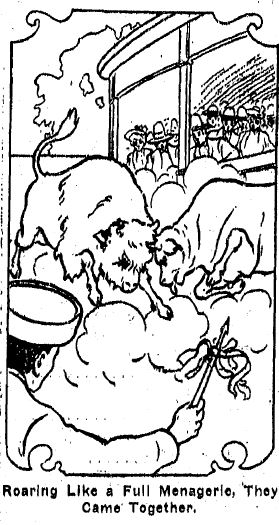
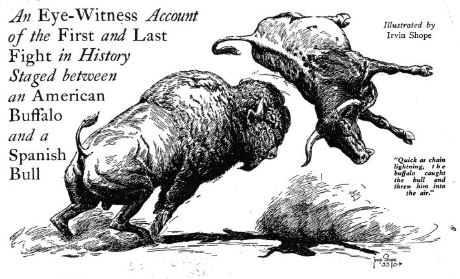
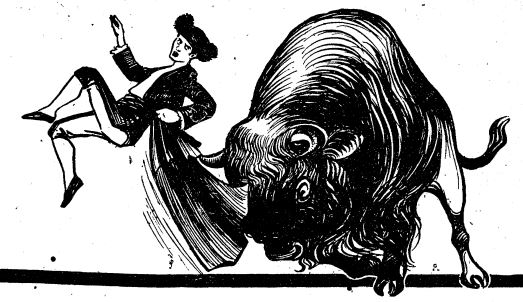

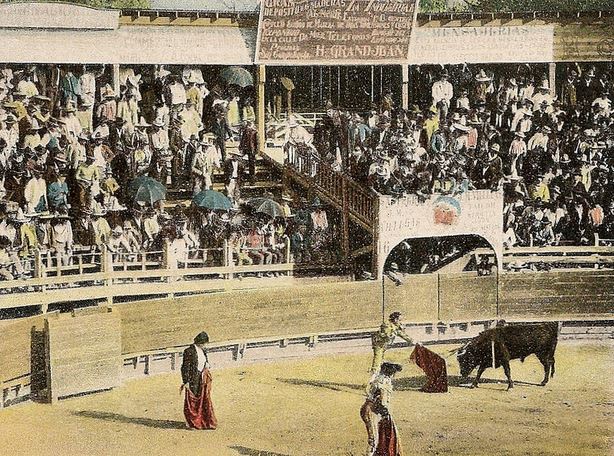
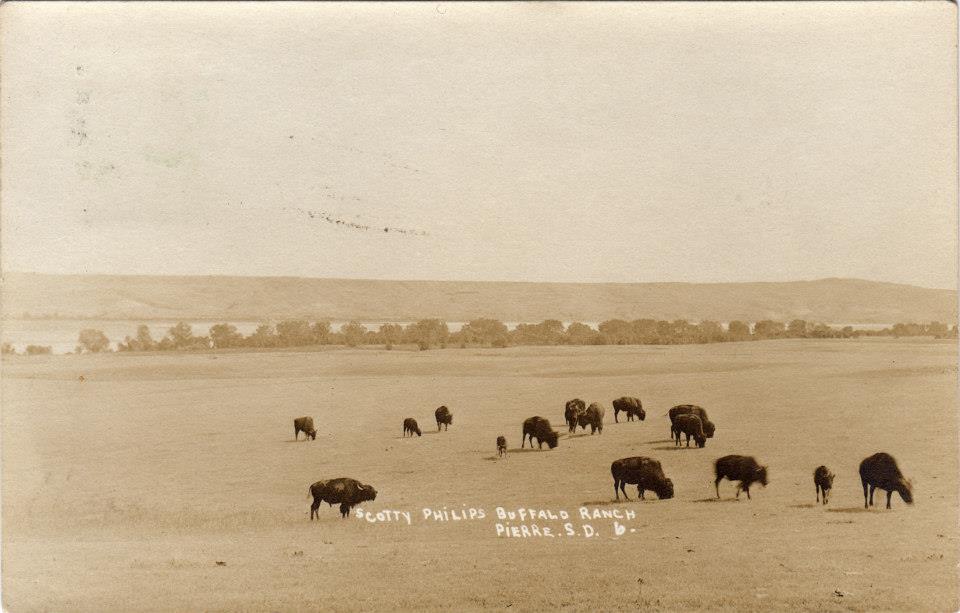

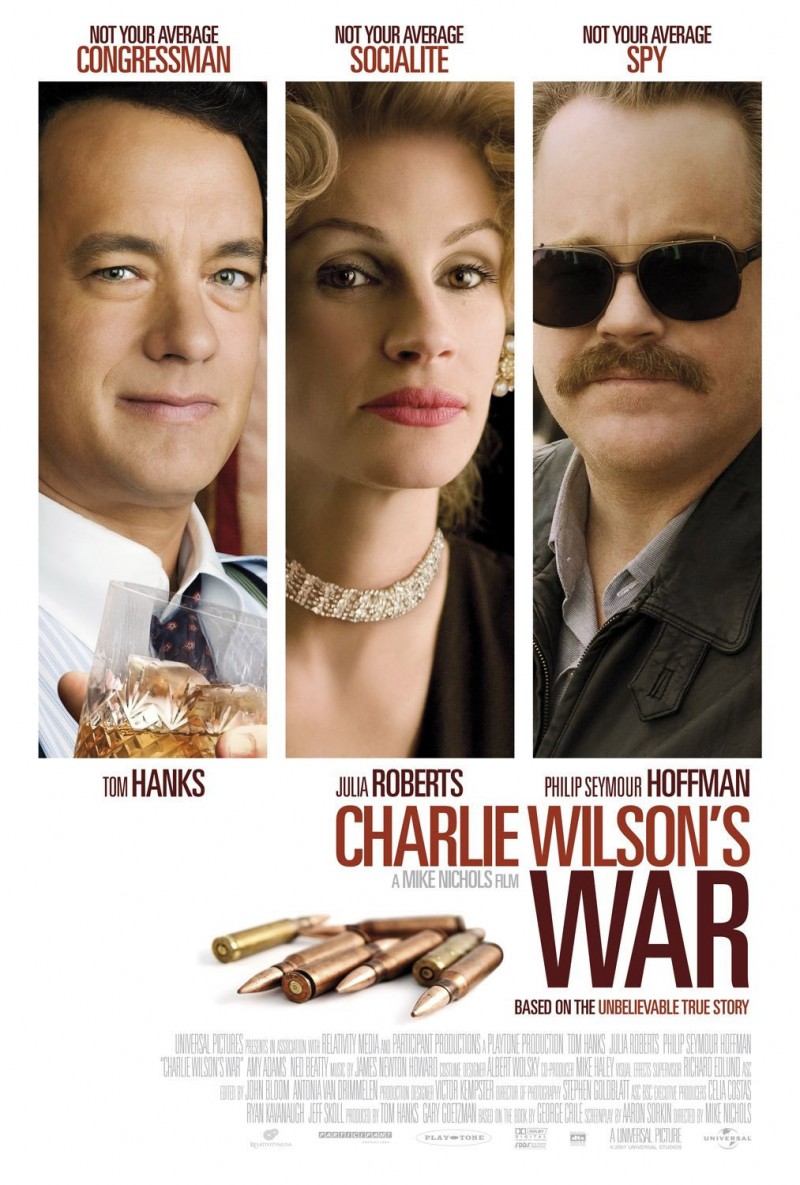

[…] on animal fights from history. We 've seen a bear body slam a lion, a rhino gore an elephant, and a buffalo throw a bull through a wood fence. Although some of these matchups were one-sided routes, they all had the promise of being […]